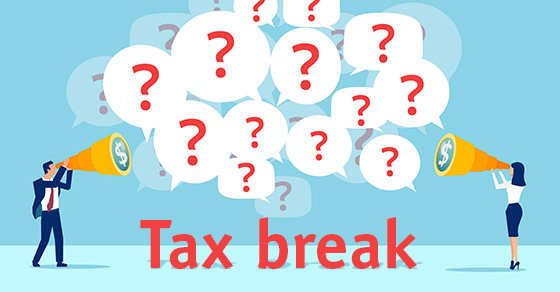
Can you deduct charitable gifts on your tax return?
Many taxpayers make charitable gifts — because they’re generous and they want to save money on their federal tax bills. But with the tax law changes that went into effect a couple years ago and the many rules that apply to charitable deductions, you may no longer get a tax break for your generosity.
Are you going to itemize?
The Tax Cuts and Jobs Act (TCJA), signed into law in 2017, didn’t put new limits on or suspend the charitable deduction, like it did with many other itemized deductions. Nevertheless, it reduces or eliminates the tax benefits of charitable giving for many taxpayers.
Itemizing saves tax only if itemized deductions exceed the standard deduction. Through 2025, the TCJA significantly increases the standard deduction. For 2020, it is $24,800 for married couples filing jointly (up from $24,400 for 2019), $18,650 for heads of households (up from $18,350 for 2019), and $12,400 for singles and married couples filing separately (up from $12,200 for 2019).
Back in 2017, these amounts were $12,700, $9,350, $6,350 respectively. The much higher standard deduction combined with limits or suspensions on some common itemized deductions means you may no longer have enough itemized deductions to exceed the standard deduction. And if that’s the case, your charitable donations won’t save you tax.
To find out if you get a tax break for your generosity, add up potential itemized deductions for the year. If the total is less than your standard deduction, your charitable donations won’t provide a tax benefit.
You might, however, be able to preserve your charitable deduction by “bunching” donations into alternating years. This can allow you to exceed the standard deduction and claim a charitable deduction (and other itemized deductions) every other year.
What is the donation deadline?
To be deductible on your 2019 return, a charitable gift must have been made by December 31, 2019. According to the IRS, a donation generally is “made” at the time of its “unconditional delivery.” The delivery date depends in part on what you donate and how you donate it. For example, for a check, the delivery date is the date you mailed it. For a credit card donation, it’s the date you make the charge.
Are there other requirements?
If you do meet the rules for itemizing, there are still other requirements. To be deductible, a donation must be made to a “qualified charity” — one that’s eligible to receive tax-deductible contributions.
And there are substantiation rules to prove you made a charitable gift. For a contribution of cash, check, or other monetary gift, regardless of amount, you must maintain a bank record or a written communication from the organization you donated to that shows its name, plus the date and amount of the contribution. If you make a charitable contribution by text message, a bill from your cell provider containing the required information is an acceptable substantiation. Any other type of written record, such as a log of contributions, isn’t sufficient.
Do you have questions?
Your DDK tax advisor can answer any questions you may have about the deductibility of charitable gifts or changes to the standard deduction and itemized deductions!
